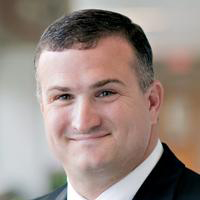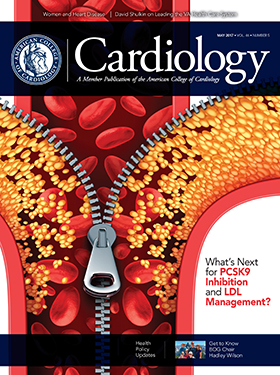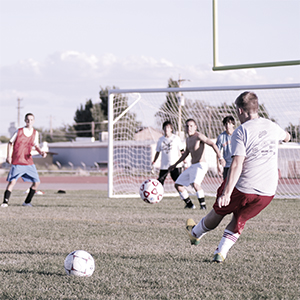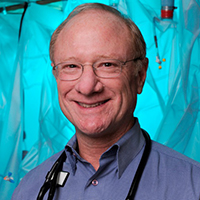Optimal assessment of athletes for identification of those at risk for sudden cardiac arrest (SCA) is ongoing. The use or opposition of use of the electrocardiogram (ECG) is often the tool most discussed when “screening debates” occur. However, some experts indicate more is needed beyond the ECG for electrically silent diseases such as anomalous aortic origin of the coronary artery arising from the opposite sinus (AAOCA). AAOCA has received increasing attention in recent years. This is due to the concern over the association with SCA, increased awareness of athletic care and improved quality and frequency of imaging.
The true prevalence of AAOCA is unknown, with estimations of 0.03 percent for anomalous left coronary artery and 0.28 percent for anomalous right coronary artery and conflicting opinions as to its true significance. Often described as the second most common cause of SCA in the young, AAOCA estimates are exclusively from autopsy data and range from 0 to 100 percent depending on the study and anatomical variation of AAOCA. This contrasts with hypertrophic cardiomyopathy (HCM), believed to be very common with an estimated prevalence of 1 in 500. HCM is considered by most experts to be the most common cause of SCA in the young with variation in risk depending on several factors. Finally, we could debate the best method to image the structural conditions associated with SCA in the young. In the last decade, increased investigation using cross-sectional imaging with cardiac magnetic resonance (CMR) has led to a better understanding of these diseases including the risk of SCA. Read More >>>
At ACC.17, Angelini and colleagues described their single-center study referred to as Screen to Prevent (S2P). They evaluated 5,255 youth over a seven-year period using a questionnaire, resting ECG and a “limited” screening CMR protocol for high-risk electrical or structural cardiovascular conditions at risk for SCA. The study group was youth ages 11-14 years with a variety of ethnicities represented (average age 13 years; 23 percent black and 19 percent Hispanic). The authors identified only 1.5 percent with high-risk cardiovascular conditions, such as abnormal ECG (Long QT syndrome) or a structural abnormality. The investigators found a history, physical exam and ECG were insufficient to identify structural conditions associated with SCA risk. In the latter group, only about 0.5 percent had AAOCA and about 0.3 percent had cardiomyopathy, predominantly a dilated cardiomyopathy. This is a deviation from prior autopsy-based studies that report HCM with a much higher frequency. This most likely reflects the age of the study group.
What does this study teach us? I am encouraged and excited by the continued interest in the evaluation of the young and athletes of all ages. For a young cardiologist interested in the field, an opportunity awaits you. This study is unique in both its population and methods making this study difficult to duplicate by other researchers let alone groups of practicing physicians attempting to utilize this protocol. The authors concluded that these data support the use of this protocol to screen young candidates involved in sports for SCA risk. I do not think this study is definitive in that regard. It is a step forward in understanding the prevalence of many conditions in this age group.
 "The authors concluded that these data support the use of this protocol to screen young candidates involved in sports for SCA risk. I do not think this study is definitive in that regard. It is a step forward in understanding the prevalence of many conditions in this age group.” — Matthew W Martinez, MD, FACC
"The authors concluded that these data support the use of this protocol to screen young candidates involved in sports for SCA risk. I do not think this study is definitive in that regard. It is a step forward in understanding the prevalence of many conditions in this age group.” — Matthew W Martinez, MD, FACC
There are two major hurdles that should be considered when discussing this study which do limit its applicability. A sustainable approach must provide a reproducible, cost-effective outline. I do not think this study has demonstrated a cost-effective approach to identify or prevent sudden cardiac death. Most critics have offered that additional testing beyond ECG (echocardiography, MRI or CT) remains a huge hurdle for an approach like this. Cost-effectiveness and reproducibility in the community are “must haves” for a successful model. The authors offer a cost of $250 for the entire investigation, which I believe reflects a unique value that will change by region, local resources and not likely to be reproduced in the vast majority of centers. In addition, CMR has inherent challenges in its technical aspects as well as interpretation. I offer a word of caution for shortened or abbreviated imaging of any type, cutting corners by eliminating needed steps is not advisable. CMR cost, technical limitations and availability will be obstacles difficult to overcome for this approach to take hold.
The mechanism for SCA in AAOCA is unclear. Anatomic characteristics that might portend a higher risk have been described and could be identified by CMR. These include the angle of AAOCA takeoff, intramural course, slit-like ostium, interarterial course, vessel spasm and intussusception of the anomalous vessel. However, Taylor and colleagues using autopsy data were unable to identify any specific abnormalities that correlated with SCA.1 Thus far, the only SCA variable that seems to be consistent is age, with the highest risk between ages 11 and 30 years, although the explanation is unclear.2 Identifying pre-mortem SCA risk is obviously important and perhaps future discovery with further studies will help to identify higher risk features. It is unclear if the S2P study will help in this regard, but it’s clear that is an important next step.
Matthew W Martinez, MD, FACC is chair of the ACC Sports and Exercise Council and medical director of Sports Cardiology and Hypertrophic Cardiomyopathy at Lehigh Valley Health Network in Allentown, PA.
References
- Taylor AJ, Byers JP, Cheitlin MD, Virmani R. Anomalous right or left coronary artery from the contralateral coronary sinus: high risk abnormalities in the initial coronary artery course and heterogenous clinical outcomes. Am Heart J 1997;133:428-35.
- Taylor AJ, Rogan KM, Virmani R. Sudden cardiac death associated with isolated congenital coronary artery anomalies. J Am Coll Cardiol 1992;20:640-7.
<<< Return to top
 Read the full May 2017 issue of Cardiology at ACC.org/Cardiology
Read the full May 2017 issue of Cardiology at ACC.org/Cardiology

 "There simply is no evidence that any intervention will help these children, and great evidence that it will hurt many."
"There simply is no evidence that any intervention will help these children, and great evidence that it will hurt many." 
 "The authors concluded that these data support the use of this protocol to screen young candidates involved in sports for SCA risk. I do not think this study is definitive in that regard. It is a step forward in understanding the prevalence of many conditions in this age group.”
"The authors concluded that these data support the use of this protocol to screen young candidates involved in sports for SCA risk. I do not think this study is definitive in that regard. It is a step forward in understanding the prevalence of many conditions in this age group.”